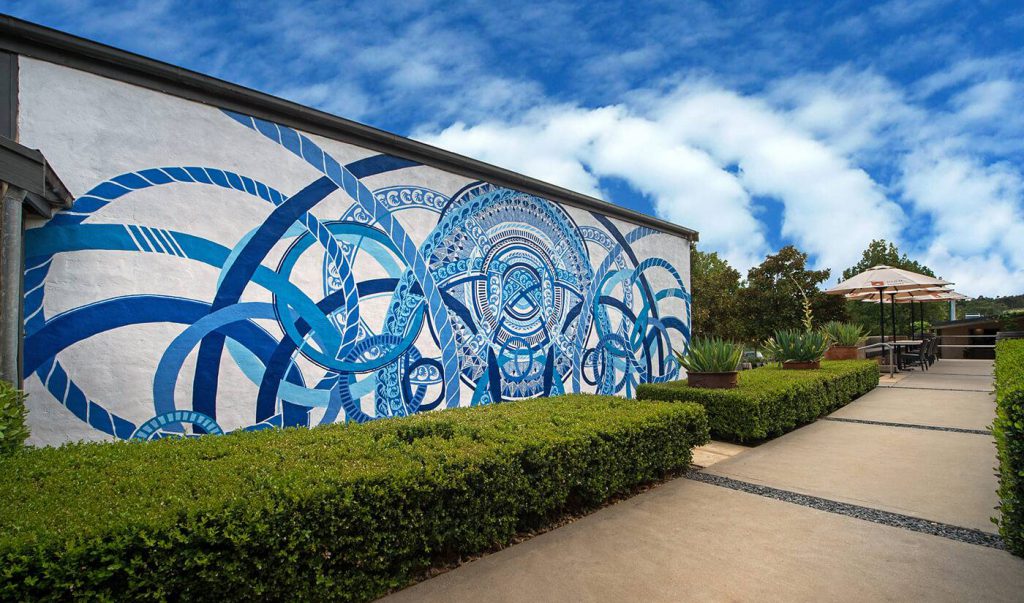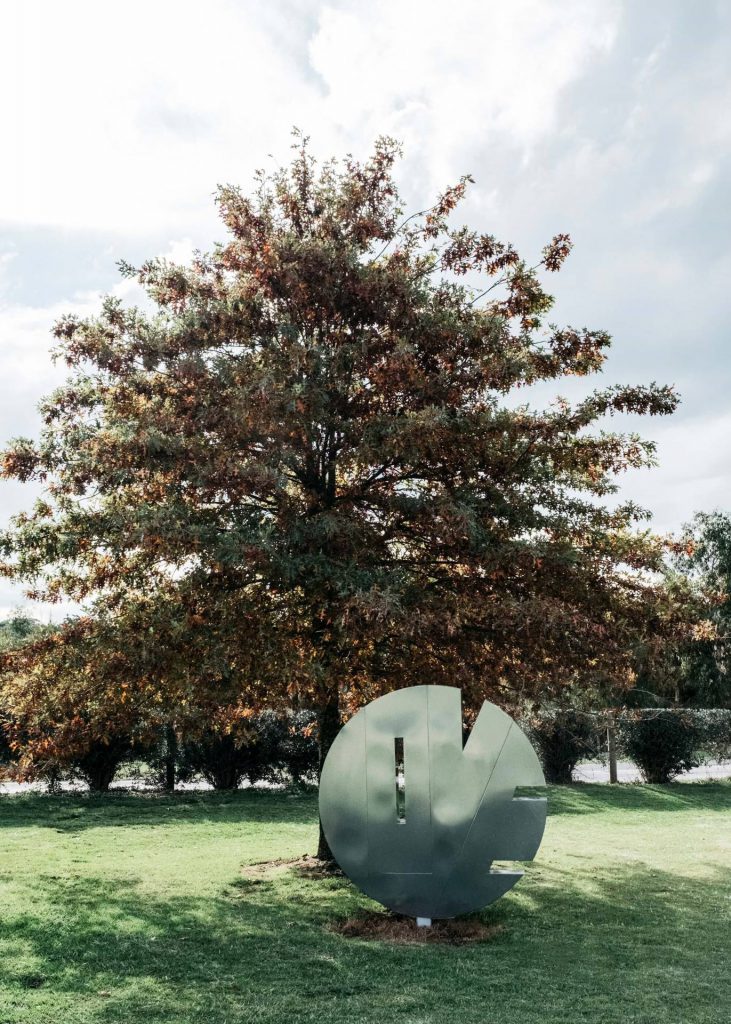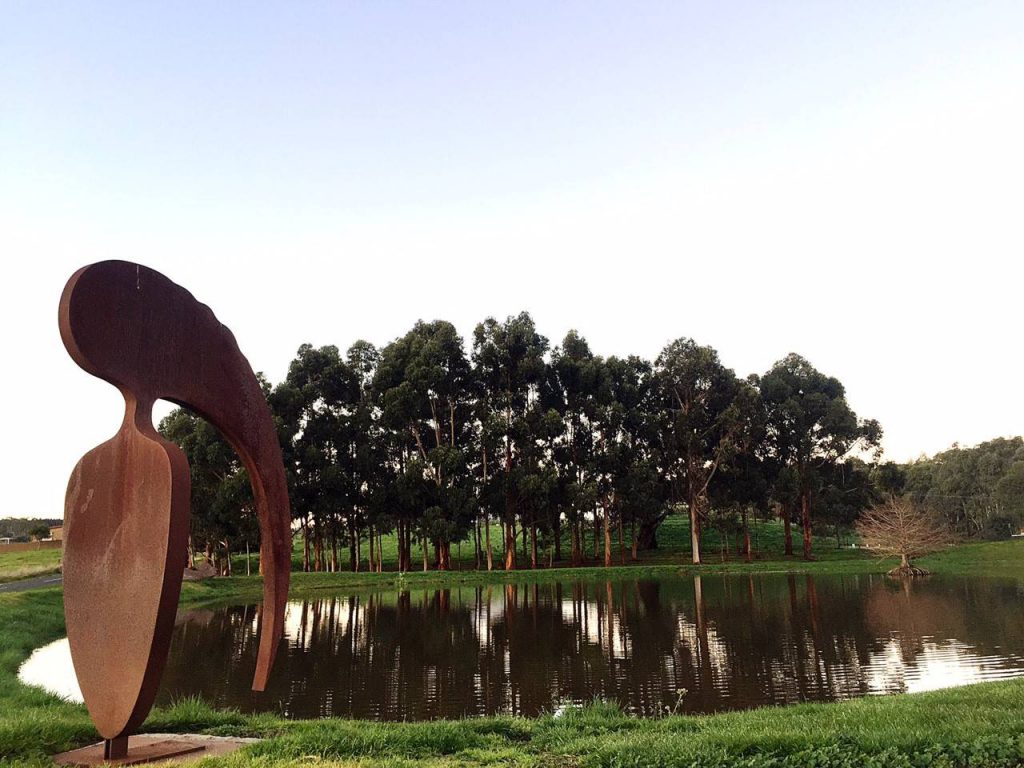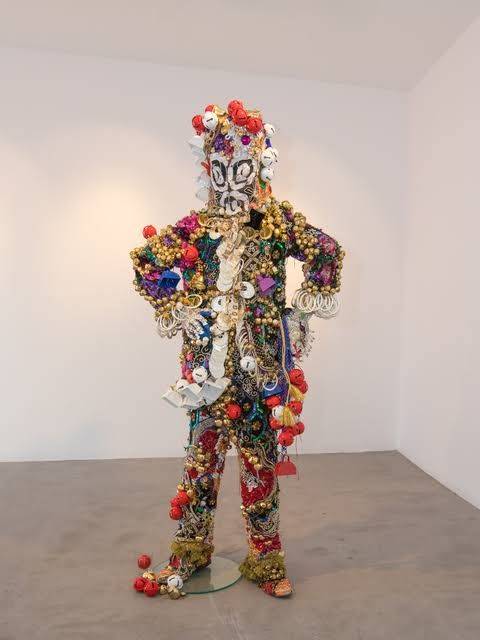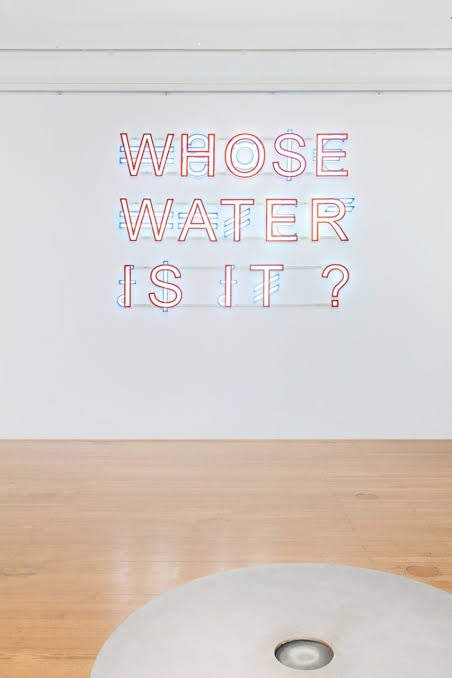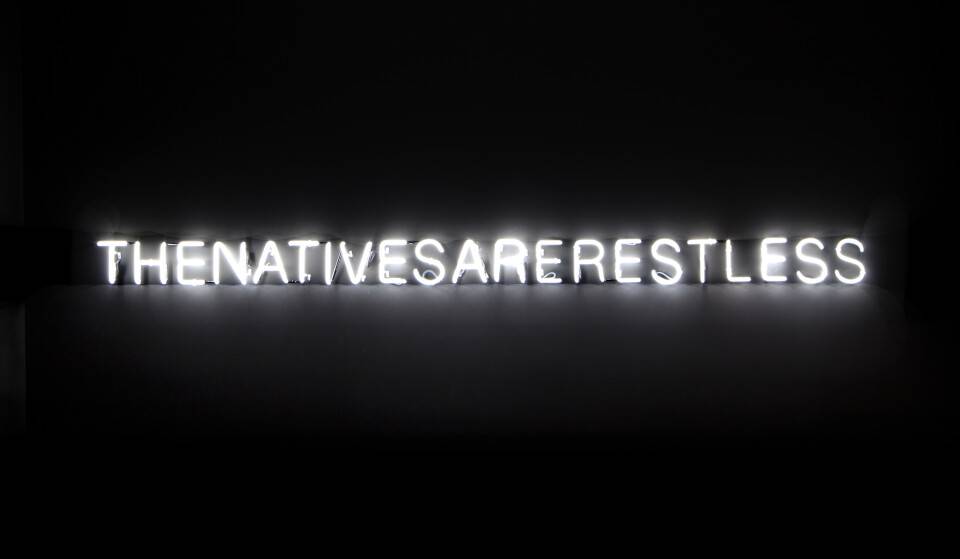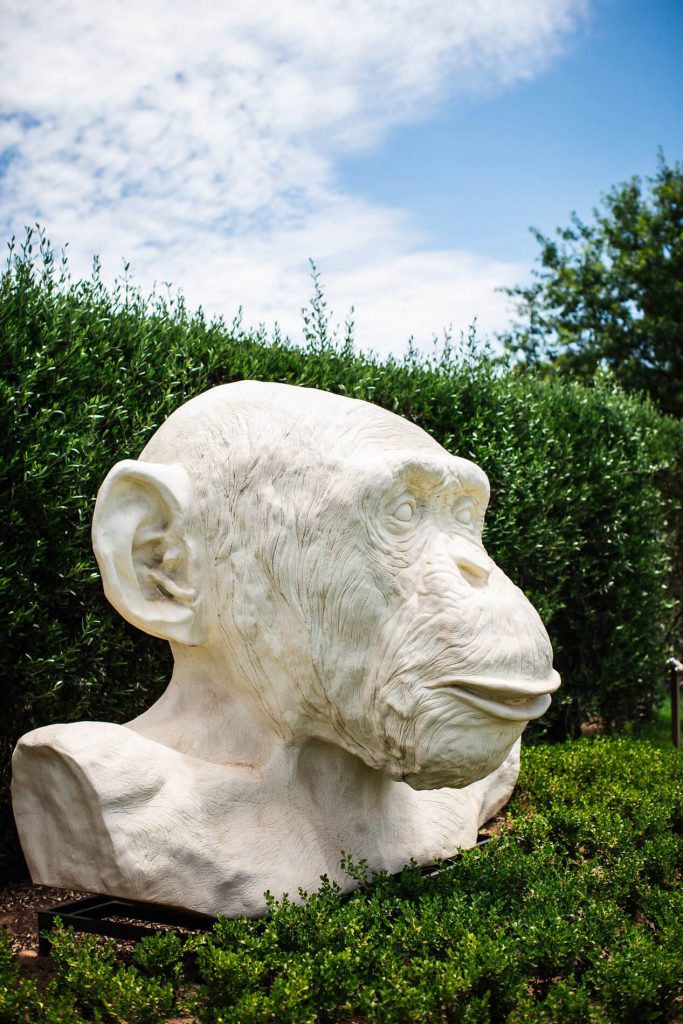
White Ape part 2
Lisa Roet
This striking fibreglass chimpanzee bust commemorates the life of an Ape, given dignity and acclaim in death with the status of a high-ranking statesman or famed person. 3 metres high, the piece of art encourages us to reflect upon prevailing attitudes towards these relatives with whom we share in excess of 98% of our DNA and the lingering anxiety with our evolutionary past. For over two decades Lisa has won acclaim in Australia and internationally for her powerful investigations into the complex interface between humans and our simian relatives.
Acquired as part of Bird in Hand’s 20th anniversary celebrations.
